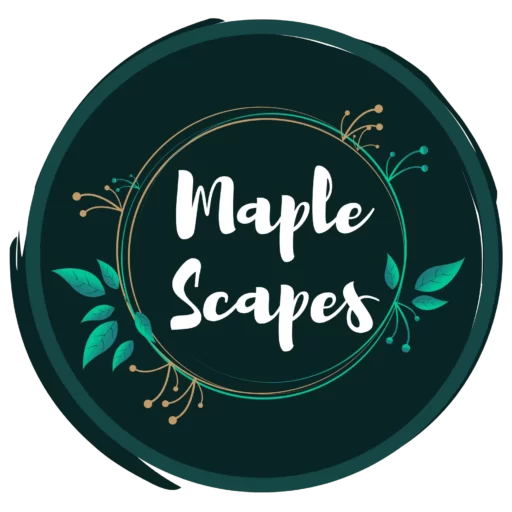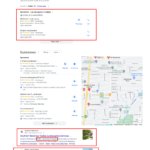How are your bushes and trees doing? Does your garden have mulch? If not, you are burdening yourself with extra labour and impeding the growth of your plants. When done correctly, mulching is a frequently used gardening practice that is good for plants and can save you time and improve your property. It is the process of putting mulch on the dirt to keep it moist and improve its quality.
Common mulches include bark, wood chips, leaves, and other organic materials.
Read on to find out what mulching is, its advantages and disadvantages, and how to use it to your advantage.
❓ What is mulching?
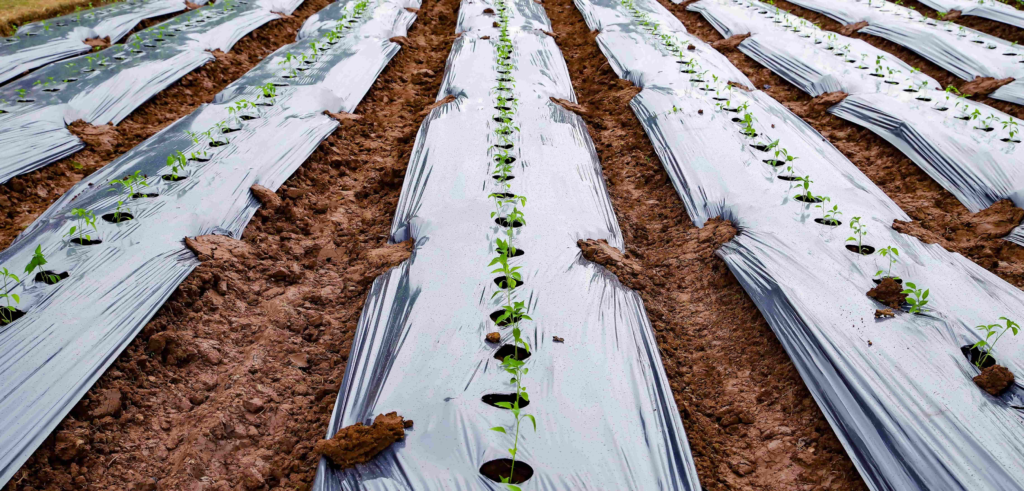
Mulch is a material sprinkled over your soil and brimming with grass advantages. Mulch will provide the protection you need for your land. It can be anything from leaves and wood chips to rubber and cloth. It stops weed growth, protects the soil from rapid temperature changes, and retains moisture for stronger roots.
Mulches come in a wide variety of forms, but there are two main categories: organic and inorganic. When deciding which kind of mulch to use in your garden or on your property, it’s crucial to consider your goals.
Organic mulches are frequently applied because they decompose and enrich the soil with nutrients, increasing its fertility. These consist of wood chips, bark from softwood and hardwood trees, pine needles, banana or coconut leaves, compostable materials, and other plant-based materials.
Depending on the material, climate, and soil microorganisms, the decomposition rates of these various organic mulches vary. Mulches need to be replaced frequently because these organic materials decompose, some of which do so more quickly than others.
Mulches made of inorganic materials require less upkeep because they don’t require replenishment. But because they don’t break down and add nutrients, they can’t fertilize the soil or improve the soil’s quality. Different kinds of stones, lava rock, ground rubber, geotextile fabrics, and others are examples of inorganic mulches that are frequently used.
Here is the description of the average cost of performing mulching:
| Average cost | $200 |
| Typical price range | $130-330 |
| Extreme low-end cost | $75 |
| Extreme high-end cost | $600 |
🧰 Equipment required for mulching
A mulch is a 2-4 inches thick layer covering the topsoil in your lawns. Mulching tools, including mulching mowers, leaf blowers, wood chippers, shovels, and rakes, among others, aid in the installation of high-quality mulch, which benefits your home gardens in a variety of ways.
🚜 Mulching Mower
A mulching mower is a piece of equipment with a blade and mowing deck intended to cut the grass several times. In order to direct the grass to the side, side-discharge mowers can be used. Additionally, you are able to attach a bag for collecting grass clippings.
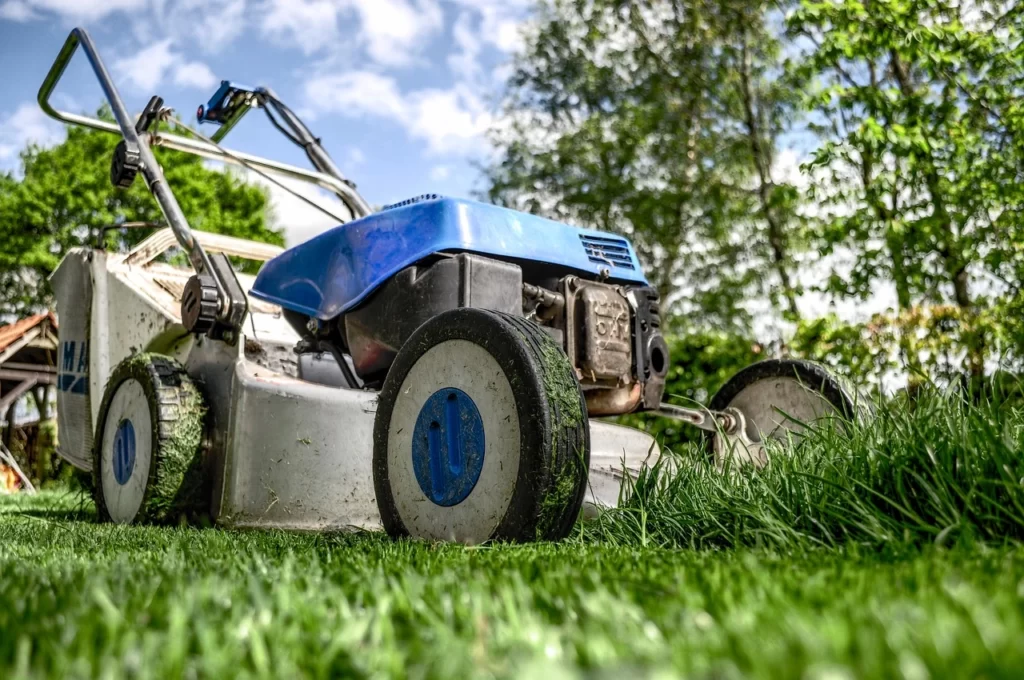
These mowers assist in providing finely chopped grass cuttings that provide shade and soil fertilizer. Mulch mowing is the term for this practice on lawns. There are a few things to keep in mind when using a mulching mower. Avoid mowing when the ground is wet; mow frequently and at a set height.
✂ Leaf Shredders
A powered tool with specialized blades is a leaf shredder, also referred to as a leaf mulcher. The purpose of these blades is to shred the leaves into tiny fragments. These chopped-up leaves can now be used as mulch or added to a compost pile. It is a useful tool for people with large lawns with trees.
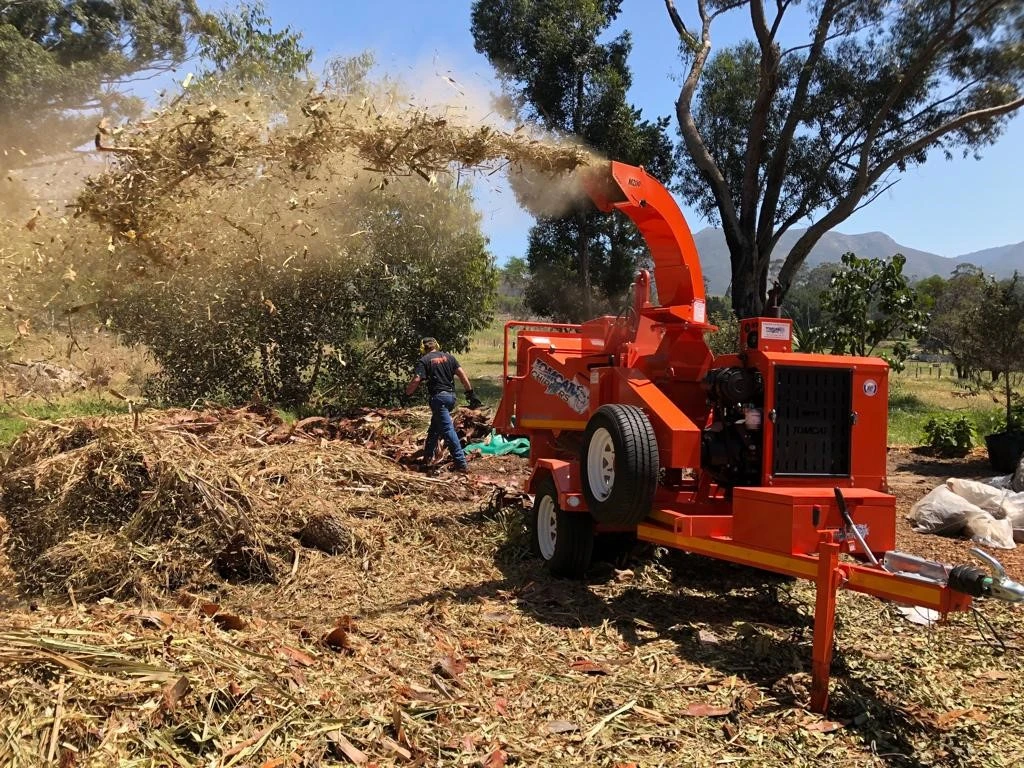
Leaves that have fallen make a great mulching material. A leaf shredder aids in the chopping of the leaves and even hastens their decomposition. The use of fallen trees in lawns with flower beds, shrubs, and trees is advised by experts. Wet leaves can clog the blades of the shredder, so dry leaves are placed inside for better results.
🪵 Wood Chippers
Wood chippers are the tools used to break up tree trunks, branches, twigs, and leaves. It aids in clearing out the large woods that are present in your yard. If your lawn has trees, you can always get indoor wood chips. The mulch produced by the wood chippers is efficient because it produces good results.

Using a wood chipper has a number of advantages. It quickly eliminates waste without creating a mess, saves time, and is energy efficient. It provides lawn owners with an eco-friendly solution and generates useful material. Finally, it is a long-term, financially successful solution.
⛏️ Shovels
An essential hand tool for mulching is a shovel. It is employed for digging and material movement throughout the garden. The shovel’s blades are strong and made of steel sheets or hard plastic. Shovel handles can be made of fibreglass or wood-reinforced plastic.
Moving mulch components like wood chips, sawdust, and pebbles are made easier by using mulch shovels. It is occasionally used to lose straw mulch. Use a large scoop shovel for fine mulch, such as dry sawdust or needles, to get results quickly.
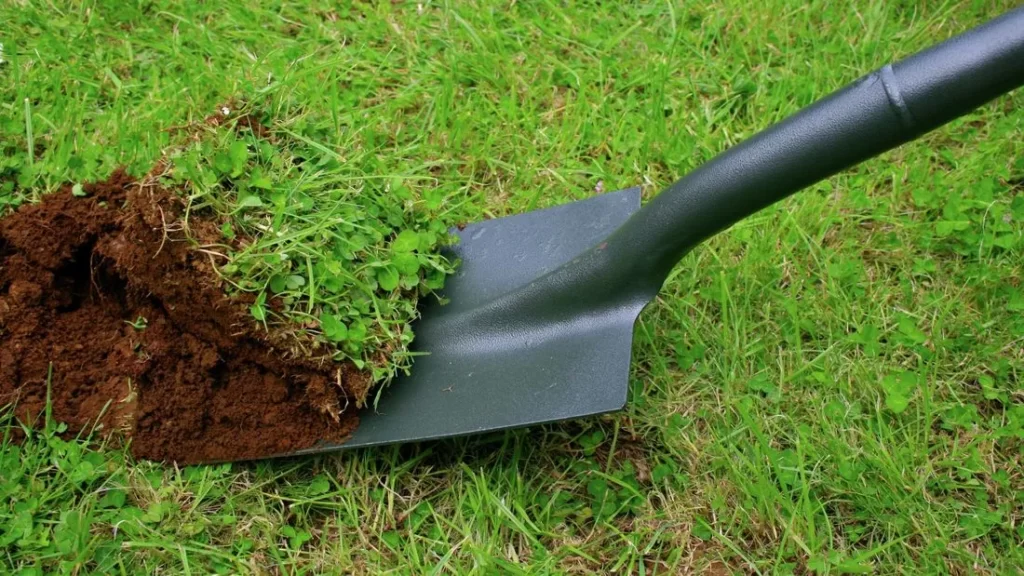
🧹 Rakes
Rakes are a crucial piece of equipment for spreading things out. The sturdy bow rake is the best tool for spreading mulch among the various rakes available. These species are renowned for having short, sturdy tines that are frequently three inches long. Only the fluffiest mulches are moved with leaf rakes. Bow rakes are small in size and have three-inch-long, sturdy tines.
You can measure the thickness of the mulch layer and gain strength and accuracy from it. In the garden, mulch is moved using rakes. Handling small mulch piles can assist in adding a larger pile in the yard for the efficient use of this tool. This method makes it very simple to spread the mulch.
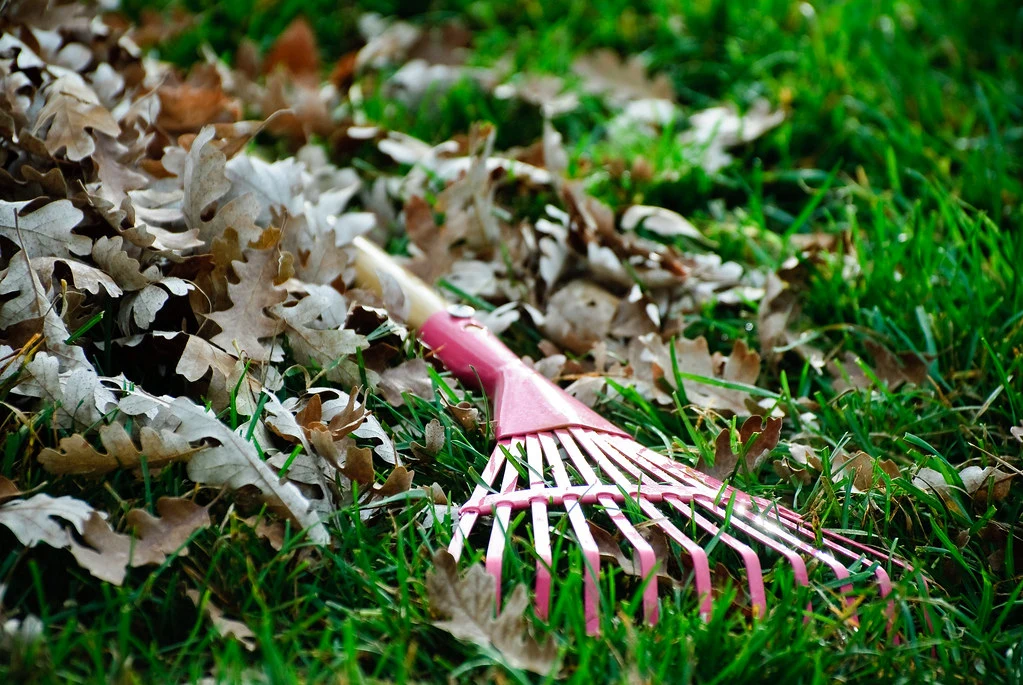
🌎 Materials for mulching
Mulching can help your landscape or garden plants look better, reduce erosion, use less water, and improve the soil’s appearance. Mulching is even required by law in some areas where water conservation is a major concern. However, not every mulch material has the same qualities or benefits the same plants in the same way.
You can choose the best mulch for your particular garden and circumstance if you take the time to carefully consider the advantages and disadvantages of all the major mulching materials prior to making a purchase.
🪵 Wood and Bark
Sawdust, ground wood mulch, chipped wood and bark are all low-cost building materials that enhance moisture penetration and water conservation. These are some of the best mulching materials and can be used alone or on top of plastic or landscape fabric.
Uncomposted wood mulches can bind up soil nitrogen as they decompose, but after a number of years, they transform into a rich source of this nutrient. Eucalyptus and cedar are insect-resistant, whereas some wood mulches can support termites and other insect pests.
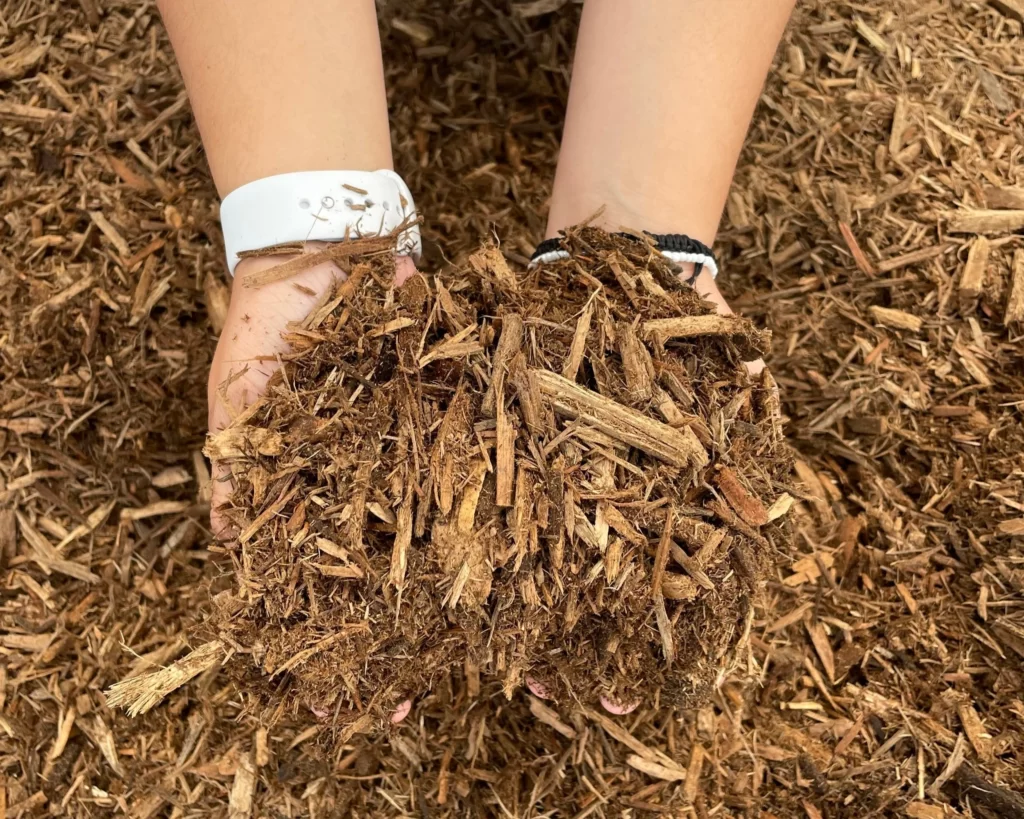
𓇢𓆸 Grass, Hay and Organic Straw Mulch
These mulch components can be gathered from the surrounding area or affordably purchased from nearby vendors. They are consistently available and simple to use, but they may mat if you apply a very thick layer.
Organic straw mulch is seed-free, according to the eOrganic website, whereas grass clippings and hay may contain weed seeds that can contaminate your landscape. All grass-type mulch components must be completely dry before use to avoid mould. Although pine needles are much more acidic than grass or straw, they offer similar advantages.
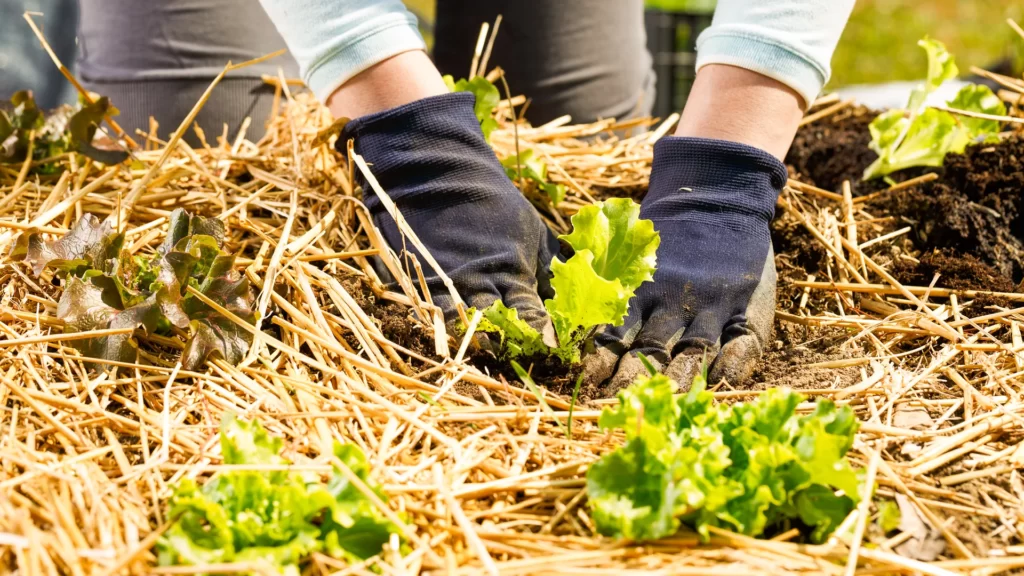
🍃 Leaf Mold and Compost
While less aesthetically pleasing than some other materials, these partially decomposed mulches are also less likely to bind vital nutrients that your plants need. These materials are reasonably priced and simple to locate, but they must be properly prepared to eliminate weed seeds and other potentially troublesome inclusions. Leaf mould should only be used with caution in high-pH soils because it can be acidic.
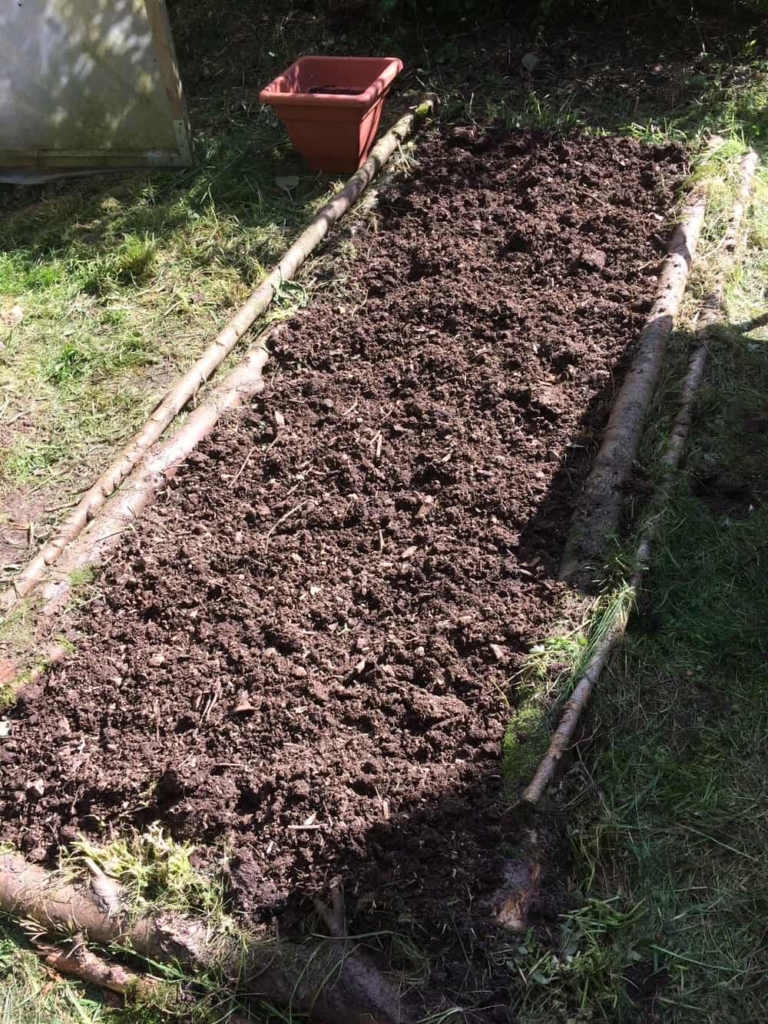
📰 Mulching With Newspaper or Cardboard (Organic)
Shredded black and white newspaper or uncolored, natural cardboard are other options for mulch. Weeds will be effectively controlled by this. To hold the newspapers in place, apply two or three layers of newspaper at a time and then cover them with heavier organic material, like leaves or grass clippings.
Mixing coloured newspaper and coated cardboard is not advised. They take a long time to decompose and could expose your garden to dangerous dyes. Newspapers that have been shredded perform similarly to grass and hay but without the risk of weed seeds.

♶ Plastics as Mulch
Commercial farms and some larger home-growing situations frequently use plastic mulches. They can lessen erosion and evaporation in the spring and aid in soil warming. Except when used as part of a soil solarization process, clear plastic does not control weeds, while black plastic does.
Although it costs more than these alternatives, polypropylene fabric allows air and water to pass through. The majority of common plastics degrade in the presence of wind, rain, and sunlight but do not biodegrade, making disposal problematic. One of the better synthetic materials used for mulching is a special photodegradable plastic film that may not need to be removed from the field.
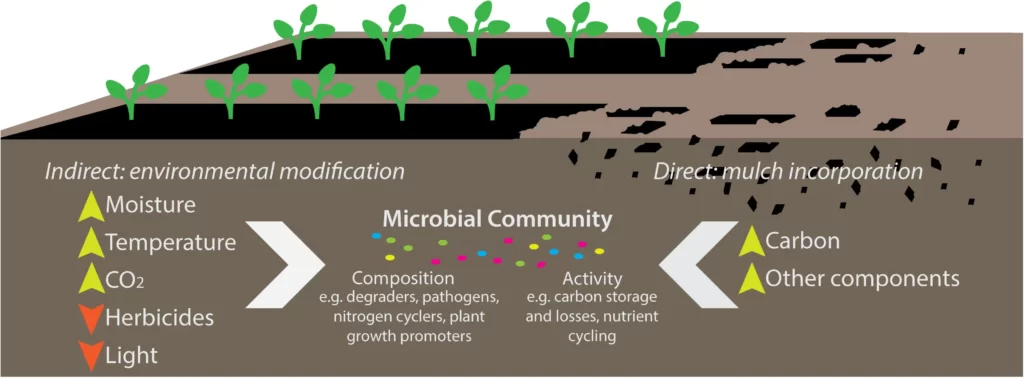
🪨 Stone and Sand
Since they can be very heavy and can make the ground very warm, rocks and sand are typically used for landscapes rather than vegetable gardens. These synthetic mulches reduce weed growth and create a beautiful landscape, but they can be very pricey in comparison to other types of mulch. Both of these types of mulch must be placed on top of landscape fabric to prevent them from settling into the ground.
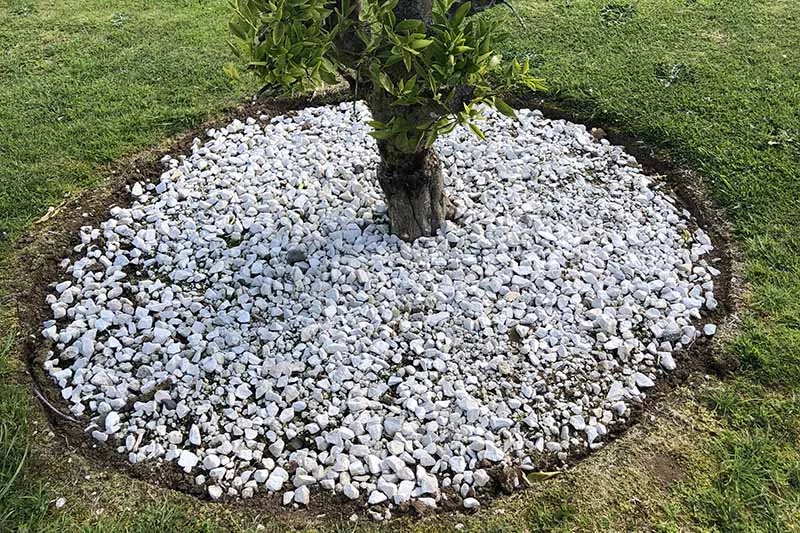
〰️ Rubber (Inorganic)
Tyres that have been recycled and ground into mulch are used. It is affordable and enduring. This is beneficial for busy places like playgrounds. Rubber contains toxins that can leach into the soil and not decompose.

💩 Composted animal manure (Organic)
The most effective mulch for vegetables is a compost made from nutrient-rich animal manure. Before using it in your garden, make sure it fully decomposes. Your plant will be burned by fresh manure. Additionally, stay away from pig, dog, and cat manure because they may contain pathogens.

🤔 How to do mulching
Utilizing organic mulch in your lawn or garden beds can reduce water usage, protect plant roots, enhance soil quality, maintain soil temperature, and inhibit weed growth. While less effective at thwarting weed growth and protecting plant roots, inorganic or decorative mulch can still add colour and texture to your garden bed or property.
Choose the mulch you want to use for your property first, then apply it according to the correct procedures to ensure it performs as intended.
1. Selecting the Best Mulch
- To give your lawn additional nutrients, choose an organic mulch.
- For a decorative look, choose inorganic mulch.
- Buy enough mulch to cover the area completely.
2. When to Mulch: A Decision
- For best results, spread organic mulch in the early summer.
- Late in the autumn, spread winter mulch.
- To newly planted trees or shrubs, apply organic mulch.
3. Mulching the Ground
- Remove weeds from the lawn.
- Make a border for the mulch.
- Remove any current mulch or cover the top with another kind.
- Mulch should be applied in small piles to your lawn or flowerbeds.
- Spread the mulch evenly over the area by raking it.
- organic mulch with water
- Every year, replace the organic mulch.
- When inorganic mulch no longer appears to be fresh, replace it.
( ˘͈ ᵕ ˘͈♡) Benefits of mulching
When it comes to the advantages of mulch, there is a lot to discuss. We’ll start with the more well-known ones. Mulching helps the soil retain water, which is one of its main benefits. The ground tends to dry out much more quickly if you leave it exposed, especially during hot spells.
The roots will dry out if you don’t keep up with watering, and before you know it, you might have a lot of dead plants in your garden. The moisture will be trapped by adding a mulch layer on top, shielding it from the wind, sun, and hot weather. Higher water retention and less watering are the results of this.
As you can probably guess, mulch shields your plants from extreme weather conditions throughout the year, including the winter. Yes, a layer of mulch helps keep the ground cooler during the hot months. However, it also functions the same in cold weather. The ground warms up nicely in the summer and can cool down fairly quickly if left exposed. Mulch acts as a blanket, extending the time that the soil below stays warm and preventing frozen roots.
As we already mentioned, mulch also prevents weeds from growing, which is a significant advantage. You can stop any bothersome weeds that may be hiding below from sprouting by covering the ground with a layer of mulch that blocks sunlight from getting to them. You will need to spend much less time weeding as a result of this.

There are some additional benefits of mulching as well, which are listed below:
- Minimises soil erosion: Water on the ground can eventually cause the soil to erode and disintegrate. Mulch provides a shield that cushions the blow and gradually evaporates the moisture.
- Increases nutrients and enhances the soil: This is a fantastic method of getting the soil ready for planting. Depending on the material, beneficial nutrients like humus, phosphorus, and nitrogen are released into the ground below when organic mulch decomposes. Even sandy or clayey soil can benefit from mulching.
- Pests are kept at bay: Certain garden pests can be effectively repelled by certain types of mulch. Pine, cedar, and cypress wood chips work great if you want to stop fleas and gnats from taking over.
- Makes an environment that is favourable to earthworms: If you create the right conditions, earthworms and other beneficial organisms will find your garden irresistible. They can greatly improve the soil’s structure, fertility, and nutrients.
- Enhances the look of your green space: Mulch can also help your garden look tidy and well-kept. Of course, not all mulch falls under this category. For instance, plastic sheets and chips aren’t the most appealing. What about stone or wood chips? They could be a great improvement to your landscaping.
- Allows you to recycle garden waste: Creating compost and mulch out of leaves and grass clippings is simple. Use less, recycle more!
🕒 When should you do it?
Mulching too early in the spring can impede soil warming and impair healthy plant growth, despite the fact that most gardeners rush to get their landscape looking its best as soon as the weather warms up as compared to normal days. Consider delaying the application of a thin layer of mulch that seedlings can pass through until mid-to-late spring instead.
In certain circumstances, you might also need to add a layer of mulch in the summer to help the soil retain moisture and in the winter to help protect perennial plants from the cold. If you choose to add a layer of mulch to your garden for the winter, be sure to gradually remove the mulch as the weather begins to warm up so that the new growth below won’t be harmed by a late-season cold snap.
😃🎯 Tips for better mulching
Laying down the mulch requires a level, weed-free area to begin with. By doing this, you can maximize the advantages of your mulch and give it a fresh start. To allow for air circulation and lower the chance of insect or disease damage, keep the mulch at least three inches away from its bases if plants are growing in the mulch area.
Two to four inches of mulch are ideal for the majority of mulched areas. Consider going closer to 2 inches if the material is fine. Going closer to 4 inches is frequently preferable for coarse mulch. Increased mulch thickness can suffocate plants, make it harder for water to reach the soil, and promote disease. Often, thin layers are insufficient to deliver the full advantages.
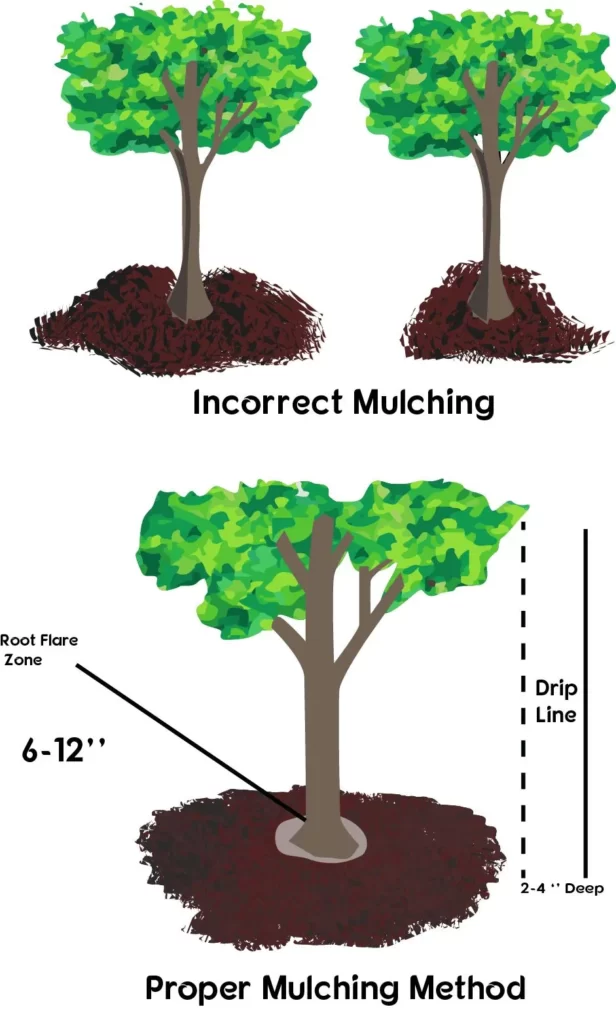
1. Get a Good Mulcher
Look for lawnmower features like specialized mulching blades or an aluminum or composite deck that prevents grass buildup on the underside if you mulch your grass. If you decide to bag your grass, make sure the bag is simple to put on and take off. When your grass has grown too long for mulching or bagging, look for a mower with a side discharge chute for the most versatility.
Some mowers have functions that make switching from bagging to mulching simple. Versamow, a feature of a mower made by Honda, allows you to control the amount of clippings that are bagged and mulched at the same time.
2. One Last Mulch
If your lawn is covered in leaves and your mower is compatible with a basic fall tool mulching attachment, consider mulching before doing the final cleanup. To quickly dispose of the leaves or to use them in your garden, your lawnmower can shred them in advance. The best of both worlds are present.
3. Use the right amount
The first step in applying mulch to your garden to encourage fauna growth is understanding how much to use. According to Angi, using too much can weaken your plants and make them need more nutrients and water because it encourages their root systems to remain shallow. Using too little will prevent it from being nearly as effective as it could be.
You can use a variety of online tools available. Here is a link to one such free mulch calculator.
To ensure that you have enough mulch for your plants to benefit from it but not so much that your flora is suffocated and buried under it, keep it between 2 and 3 inches thick. According to Almanack, too much of this type of compost prevents the roots from getting essential access to water and oxygen. The Almanack also advises that you should figure out how much mulch you need for your garden by multiplying it by 18 cubic feet for every 100 square feet. For instance, you would need to buy 27 cubic feet of mulch if you wanted a 3-inch deep layer of coverage.
4. Test your soil
You can determine which nutrients your garden lacks and whether the pH level is suitable for plant growth by testing the acidity and nutrient consistency of the soil in your garden. This will help you better understand the type of mulch you should buy for the best results.
Since nitrogen is a crucial nutrient for plant health and growth, Angi advises using mulch made of horse manure and supplementing it with bone meal, horn meal, hoof meal, or feather meal if your soil’s nitrogen levels are low. Manure is another great option if your soil tests low for phosphorus or the ground isn’t in the best condition. Compost mulch can help raise potassium levels in your soil if they are low.
The type of fertilizer you should use can also be determined by testing your soil to see if it is alkaline, neutral, or acidic. Aim to maintain your soil’s pH level as neutral as possible, which is a 7 on the pH scale of 1 to 14 (with 1 being the most acidic), as Grow Cook Learn advises. In contrast, since pine bark mulch is much more acidic than other types of fertilizer, using it can help lower your soil’s pH level if it already has a high level.
5. Apply mulch twice a year
You should add mulch to your garden twice: once in the spring after the ground thaws and once in the late fall after the ground freezes. Your plants benefit from having an additional barrier of defence against the harsh winter elements thanks to the addition of the second layer of fertilizer.
The Almanack advises starting fresh each year with brand-new mulch and removing all of the previous year’s winter compost before adding it again in the spring. Your plants will be able to breathe, and new growth will be encouraged. However, make sure you thoroughly weeded your garden before applying new fertilizer. According to Good Housekeeping, in order to give the compost a better chance of keeping unwanted weeds out, it should always be spread after the area has been cleared of them.
If your garden is still prone to weeds, double mulching with newspaper can help stop them in their tracks. This is because applying fertilizer a little thicker in the spring can help prevent weed growth. Put your plants in the ground, give them a good drink of water, then double mulch them with newspaper around the base and compost on top. The additional layer of defence will prevent roots from penetrating the surface.
✅ Conclusion
Mulching with various materials has the potential to retain soil moisture, lower evaporation losses, and control weed growth. Different mulching had a noticeable impact on various crops’ development, production, and quality. Because different scientists have noted the negative effects of mulching, there are discrepancies regarding its effectiveness.
Although the benefits of mulches predominate in these contradictions, the disadvantages reported by various scientists are not as dangerous in actual field conditions. However, it can be inferred from the literature that mulches are an inexpensive way to lower weed populations and significantly preserve the moisture content of the soil.
Therefore, properly managed mulching strategies could make up for the water needed by crops in drought or water shortage conditions. Additionally, combining the partial root-zone drying (PRD) method with the mulching system (wheat straw, cotton sticks, black plastic, and maize straw) may effectively increase overall crop growth, development, and yield.
